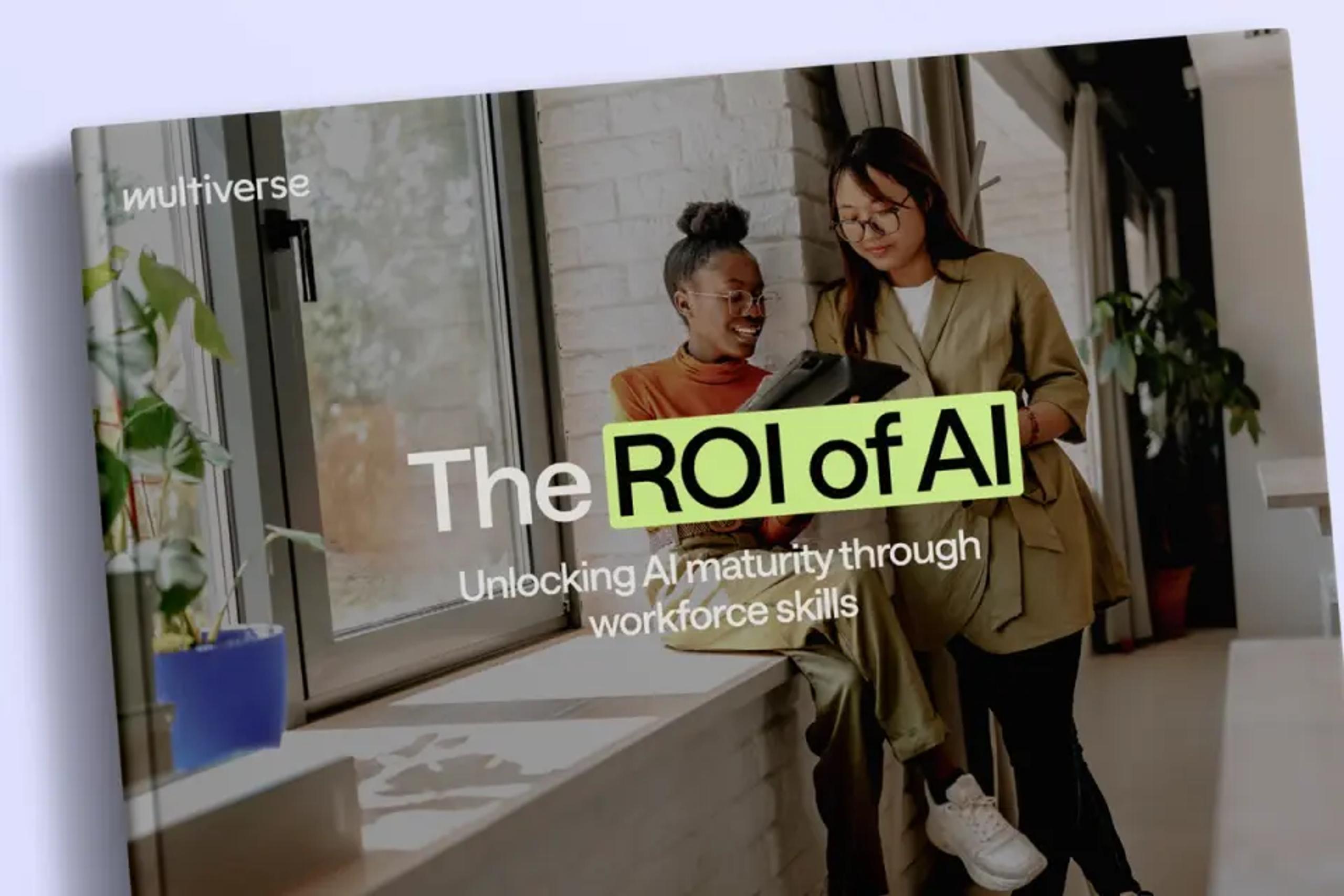Contents
No two apprenticeships are the same.
After all, an apprenticeship at a construction company involves a very different skill set from an apprenticeship at a digital media agency. But the differences aren't limited to hard skills and credentials. An apprentice’s personal career goals, work ethic and unique personality traits all have an impact on the success of your apprenticeships.
That's why it's crucial to partner with a provider who refuses to paint all companies, and all apprenticeships, with the same brush.
Finding a reliable apprenticeship provider can feel like mission impossible, especially if you've been burnt before. This guide will help you through the entire process, including what qualifications to look for and questions to ask.
What's different about apprenticeships today?
Before we dive into the definition of what an apprenticeship provider actually does, let’s take a moment to look at the latest numbers(opens new window) around apprenticeships.
In 2017/18, a total of 814,800 people participated in an apprenticeship. Today's apprenticeships come from sectors as wide-ranging as Business Administration, Law, Health, Public Services, and Care. It truly is a whole new world.
Today's apprenticeships look far different than the ones most of us grew up with. Maybe that's why, when we polled an audience of talent professionals, finding a reliable apprenticeship provider was reported as their #1 biggest challenge.
So, what exactly is an apprenticeship provider anyway?
An apprenticeship provider helps you recruit, hire and train apprentices for your business based on your unique goals and requirements.
Here are some of the things a great apprenticeship provider will do:
- Help you choose the right type of scheme. Your apprenticeships provider can help you identify the teams and departments within your business that can benefit from taking on apprentices. Whether it's building a pipeline of entry-level talent for a particular part of the business or embracing diversity from the ground up, your apprenticeship provider can help guide you through it.
- Take responsibility for the quality of your apprentices. From running pre-screening and assessment days, video and in-person interviews and ongoing training support, a great provider will help ensure your apprentices are up to task.
- Regularly review and evaluate apprentice progress.Your apprenticeship provider can help you onboard your apprentices and address any issues that may arise as they get accustomed to your company and culture.
Sounds simple, right?
In a perfect world, it would be. But with 2,491 organisations listed as government approved apprenticeship providers, finding the right one is not going to be easy.
A step-by-step guide to finding the right apprenticeship provider
Step 1. Ask for recommendations
Ask your friends and colleagues if they know a reliable apprenticeship provider. If yes, try to find out more about their experience. What did they like the most? What didn’t work for them? Would they recommend this provider?
Another option is to head to your favorite professional social media platforms and put out an open call for recommendations. Facebook groups and other professional forums can be great places to find out what providers other talent pros are working with and why.
Step 2. Check for qualified providers
As with finding your next awesome employee, the best way to find the right apprenticeship provider is by referral—but there are times when that's just not an option.
If that's the case for you, start your search by accessing the list of government-approved training providers(opens new window). In order to be included on this list, providers must first complete a pre-qualification process, which includes questions about capacity and capability, adding an extra layer of due diligence without you having to lift a finger.
Step 3. Do your due diligence
You can find a great deal of information about a provider simply by doing a little internet browsing. Look for case studies, reviews and testimonials that can give you insight to their track record, previous customers and business values.
Here are a few things to investigate.
Have they been inspected by Ofsted?
If they are on the register, they will be subject to an Ofsted inspection. These inspections are usually conducted within three years of a provider first beginning to deliver education and training programmes.
Ofsted inspectors assess three key attributes:
- Leadership- Has the provider's leadership delivered a successful apprenticeship programme? What areas did they excel in and what areas need improvement?
- Quality and outcomes of training - Have apprentices been able to access high-quality training?
- Safeguarding - How effective are the providers' safeguarding arrangements? How can leaders and managers improve these? Where are the gaps or issues?
Ofsted uses the following grades to score each provider:
1 = Outstanding
2 = Good
3 = Requires Improvement
4 = Inadequate
To check a provider’s Ofsted rating, you can access their inspection report by typing their name into this directory(opens new window).
It’s best to stick with providers that are Grade 2 or above, unless you have a well thought-out reason to not follow this advice, such as you’re looking for a provider in a niche industry.
Have they received a notice of concern?
When a provider fails to meet acceptable quality and financial standards, they are issued with a notice of concern by the Education and Skills Funding Agency (ESFA).
To see if your preferred provider has received a notice, you can check the record of current notices of concern here(opens new window).
What happens if you spot your provider on this list?
If your provider is listed, you can decide whether or not you still want to use them depending on the type of notice—was it for a serious breach like not meeting apprenticeship minimum standards? Or a smaller concern?
If you like the provider and the notice is not serious or relevant to your business, you can still consider working with them. Just make sure you also check for other signs of credibility.
What can you learn from their website?
There’s a heap of information you can glean from a provider's website and social media accounts.
Here are some of the things to keep an eye out for:
- Business values and vision
- Information about the process for recruiting apprentices
- Information about matching apprentices to employers
- Employer case studies and testimonials
- Apprentice case studies and testimonials
- Awards and badges
If the provider has a blog with up-to-date content and active social media accounts with regular posts about their apprentices, consider that a bonus.
You're looking for a provider who is proactively staying ahead of the trends and is well-informed on everything from the latest information on the levy to what it takes to win in the modern world of HR.
Step 4. Interview
Recruitment
- Please describe your recruitment process for prospective apprentices. What are the different stages?
- How do you ensure diversity among candidates and remove bias?
- How do you prepare candidates for interviews and assessment days?
Coaching and support
- Describe the steps you take to help apprentices plan their long-term career goals.
- What support do you offer to both line managers and apprentices to make sure they get the most out of the apprenticeship?
- Are your apprentices aware of what career opportunities are available to them after they get their qualification?
Expertise
- What specialist knowledge do you have?
- What industries do you serve?
- Please describe your internal accreditation process for your delivery team.
- How is your coaching content created? Is it regularly updated?
Added value
- Do you provide any additional learning or social learning opportunities?
- What additional support or mentorship do you offer your apprentices?
What should a reliable apprenticeship provider look like? A quick checklist.
In a perfect world, every apprenticeship provider would flawlessly execute each of the above responsibilities.
But as many talent professionals have learnt the hard way, the world of apprenticeships is packed with changes and challenges. You need to know exactly what to look for before you put your neck on the line and risk making a critical mistake—one that could limit your ability to get the buy-in you need for future HR investments.
Here’s a handy checklist to help you focus in on the parts of the pitch that really matter.
Customer service
- Are the staff approachable and responsive?
- Is there a dedicated customer engagement team?
- Has the provider demonstrated knowledge of your industry?
- Do they communicate clearly?
- What additional support do they offer line managers?
- What additional support do they offer apprentices?
Apprentice success
- Are apprentices supported at every step in their journey (including after they are placed with a company)?
- Is apprentice success stated as part of the provider's mission?
- Do they run regular progress reviews with apprentices?
- Do they offer fair and robust candidate selection and matching processes?
Employer engagement
- Is their briefing process thorough and perceptive?
- How much support is offered to the employer throughout the recruitment process?
- How much support is offered to the employer throughout the onboarding process?
- Do they offer regular meetings and visits with your account manager?
- Have they presented a clear lead time and a minimum cohort size?
- Can they provide examples of a time they had to jump in and help solve challenges?
What are the red flags to watch out for?
Sometimes providers look great on paper, or have an excellent pitch, but ultimately turn out not to be the right fit. Even if your gut tells you they’re not a good fit, it can be hard to listen to it without something more tangible to go on.
Here are a few red flags to look out for.
Red Flag #1. Over-promising and under-delivering
Chances are, you already have a good idea of how long it takes to recruit entry level talent. You likely also have a sense of the timescales needed, based on the skills and knowledge required for each role.
If a provider starts promising pie-in-the-sky numbers about how many apprentices they can recruit, or how fast they can do it, this may be an indication that they're more committed to quantity over quality.
Red Flag #2. Gaps in the recruitment process
If a provider has a poor recruitment process, you could be putting your apprenticeship scheme at risk before it even begins. A mismatch between apprentice and employer inevitably leads to a poor apprentice experience and high turnover rate, both of which can hurt your employer brand.
Red Flag #3. The provider doesn’t understand your business
A lack of experience working with other employers in your industry can lead to various problems such as, failing to match apprentices appropriately, not understanding how much and what kind of support apprentices and employers will need, and a greater mismatch in terms of cultural fit.
Final words of advice
Choosing a provider you can trust—one that understands your business and shares your values—is the cornerstone of every successful apprentice programme. Don’t rush the process..
By taking the time to find the right fit, you'll be confident knowing you've given both your apprentices and your business all the necessary tools to succeed.




